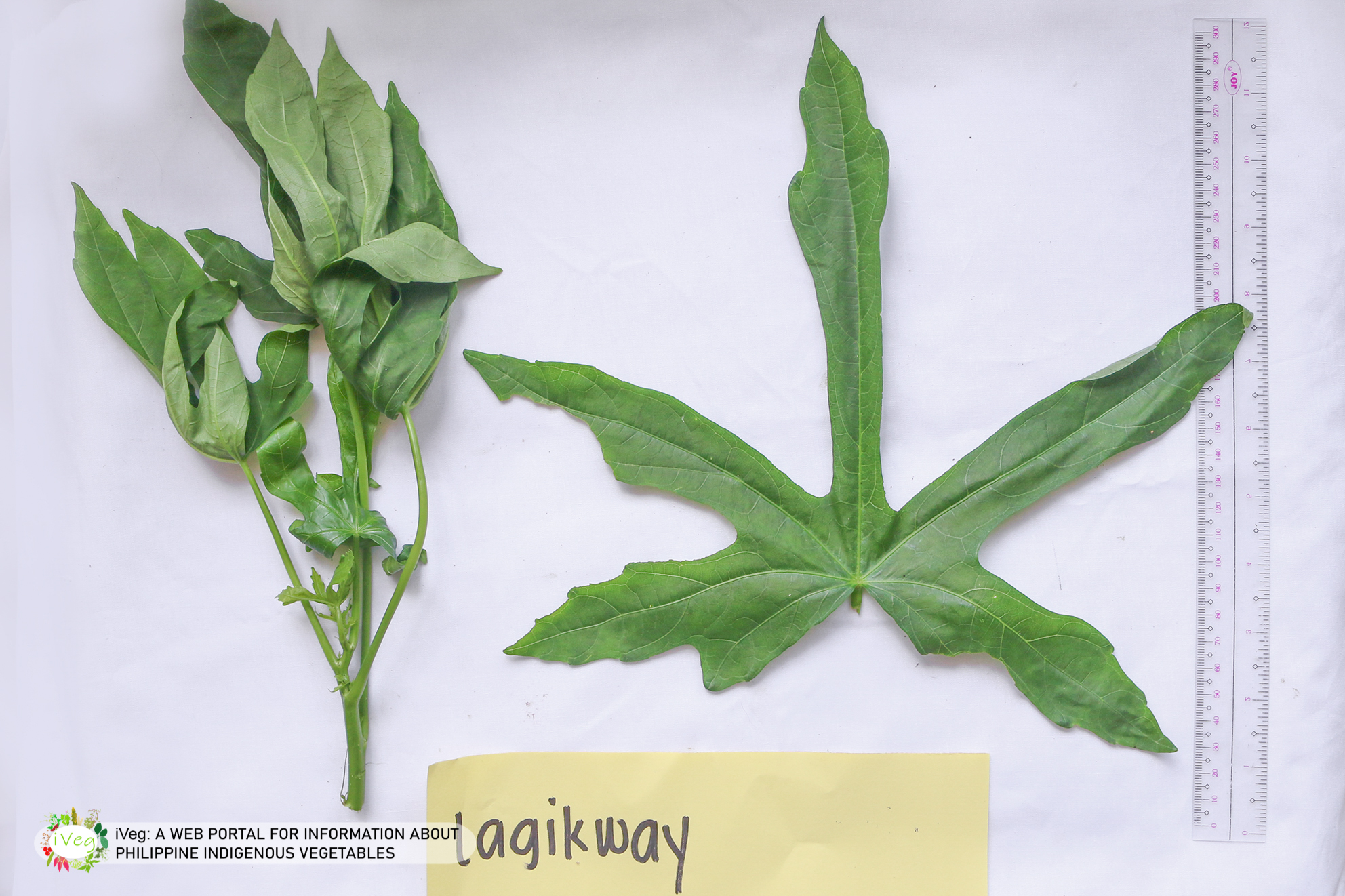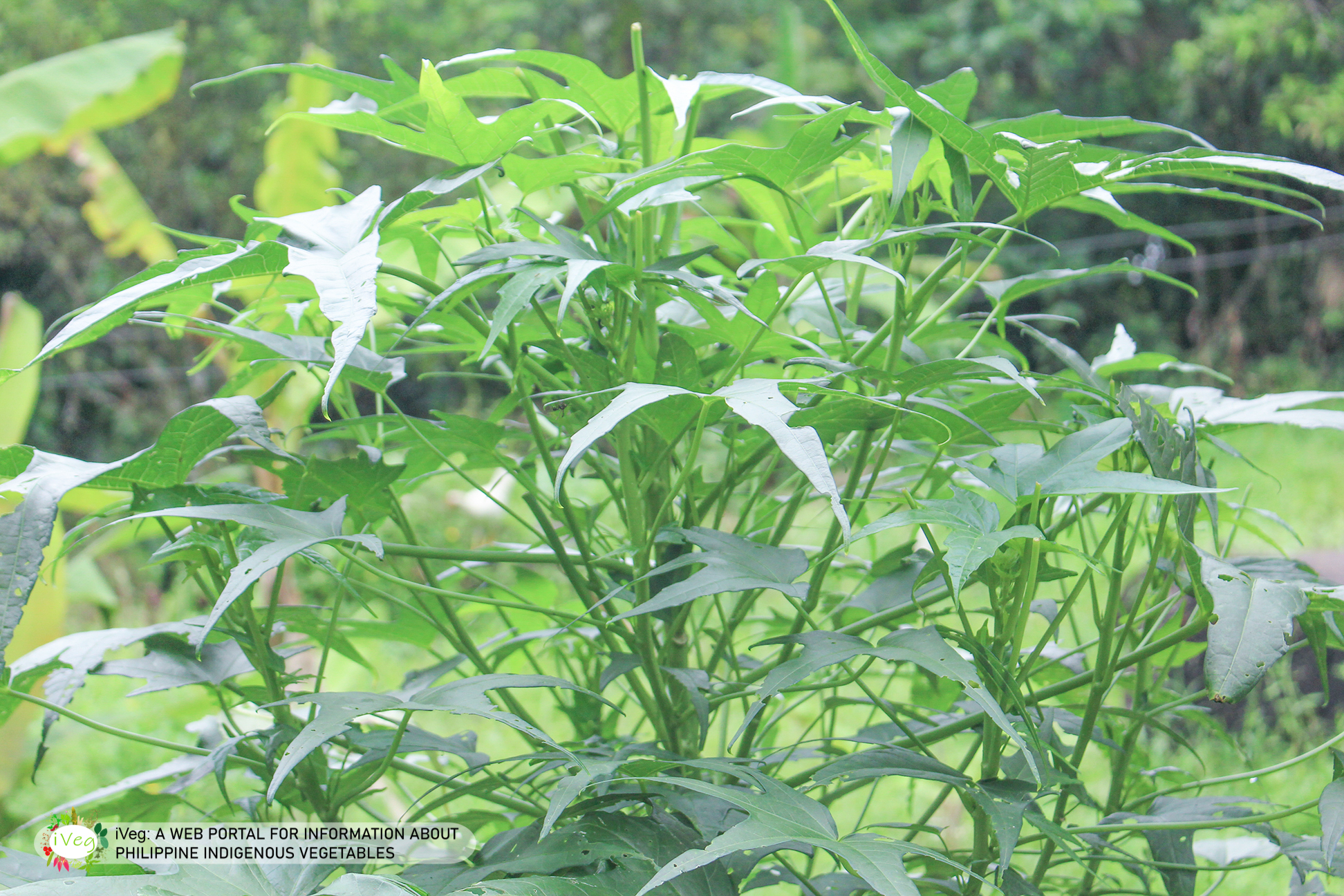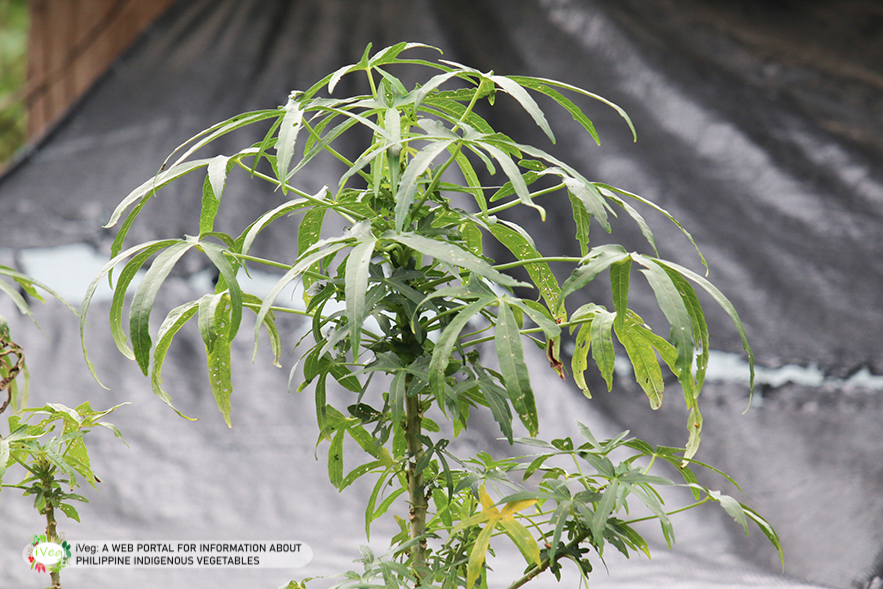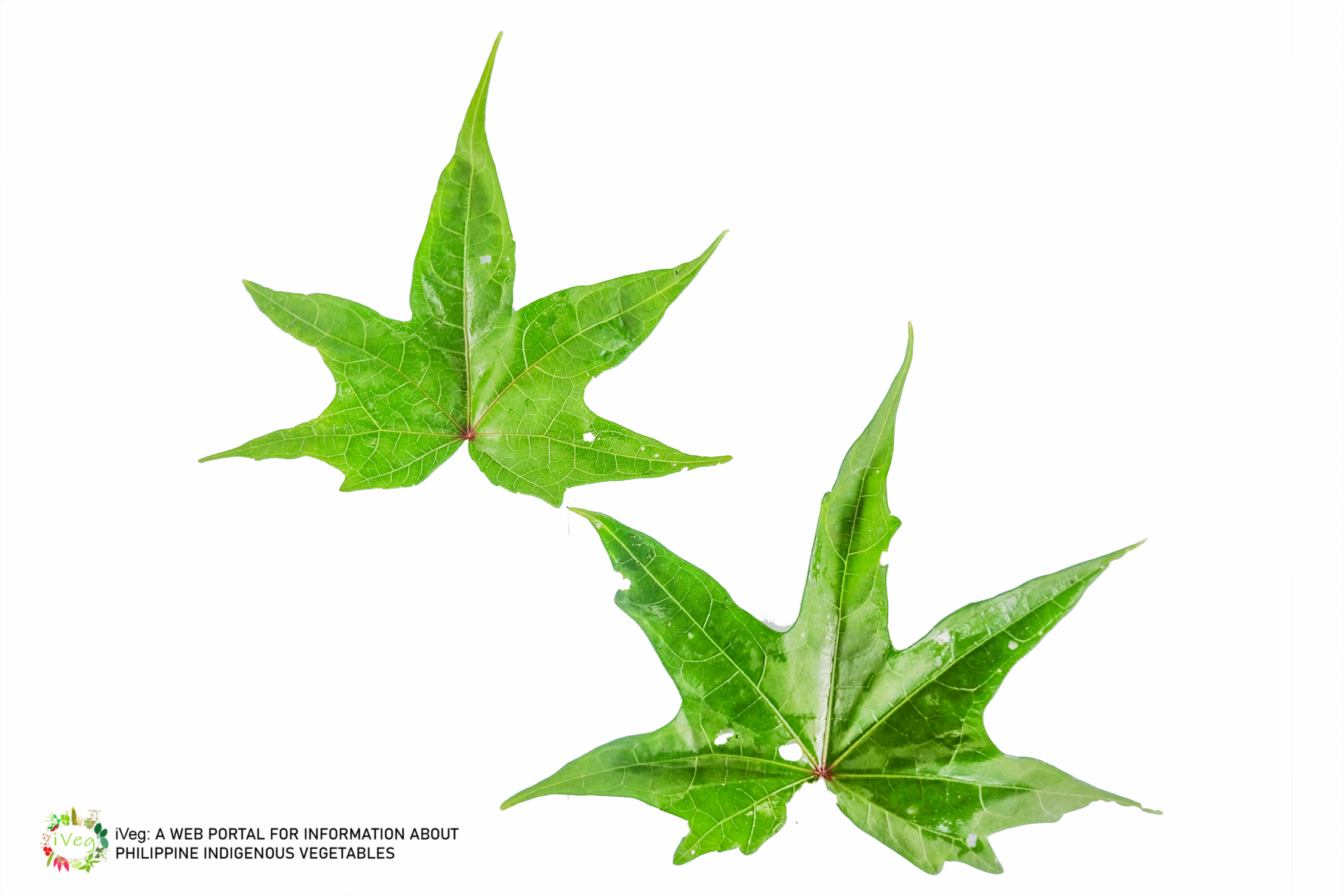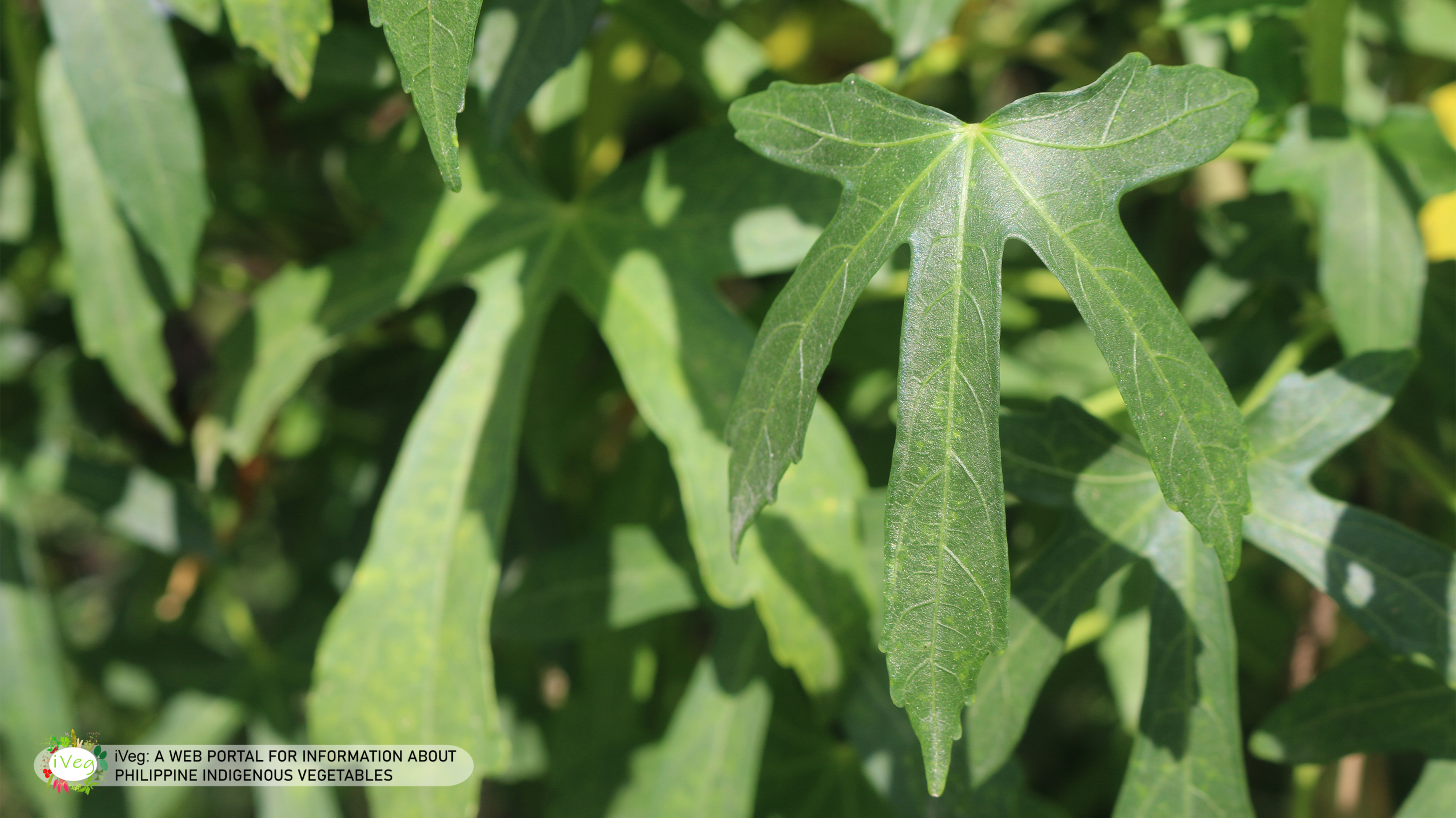Lagikway
Abelmoschus manihot (L.) Medikus
Family:
Malvaceae
Synonyms:
Abelmoschus caillei,
Abelmoschus manihot (var.) manihot,
Abelmoschus manihot (var.) megaspermus,
Abelmoschus manihot (var.) timorensis,
Abelmoschus platidactylus
Abelmoschus manihot (var.) manihot,
Abelmoschus manihot (var.) megaspermus,
Abelmoschus manihot (var.) timorensis,
Abelmoschus platidactylus
Philippine local names:
Agitoway, Likway, Lagikway, Nating
English Name: Aibika
Botanical Description
Aibika is a perennial shrub that can grow up to 4 meters tall. Grown mainly as an annual, it reaches average heights between 1.5 and 3 meters. The plants resemble okra but show great variability in leaf shape and size, petiole and stem color, branching and flowering habit. (Preston,1998)
Agroclimatic/Edaphic adaption/Ecology
Lagikway grows properly in regions in which there may be a more pronounced rainfall. (Maghirang, 2018). According to pfaf.org, lagikway cannot grow in the shade however it prefers moist soil. Similarly, planting in dry regions should likewise be feasible but with more frequent irrigation and establishment of partial shade is needed. (Maghirang, 2018)
Aibika grows best in sandy loam and clay loam soils with pH between 5 and 7 however it is able to tolerate wide range of soil types. growth is poor when the soil is highly alkaline due to micronutrient deficiencies and drought. Likewise, Aibika responds to nitrogen fertilizer by producing larger leaves and better yields (Preston, 1998). To promote faster growth and plant vigour, incorporation of compost and different organic materials is essential. (Maghirang, 2018)
Aibika grows over a wide range of climates however specifically occurs from the lowlands to 1200 meter heights. However, growth is slower at high elevations. Sufficient amount of rainfall of at the least 1200mm/year is needed for good production (Gurnah, 2018). In the Philippines, there is no documented report on flowering, pod setting, and seed production of A. manihot in various regions wherein it is domestically grown (Maghirang, 2018)
Aibika grows best in sandy loam and clay loam soils with pH between 5 and 7 however it is able to tolerate wide range of soil types. growth is poor when the soil is highly alkaline due to micronutrient deficiencies and drought. Likewise, Aibika responds to nitrogen fertilizer by producing larger leaves and better yields (Preston, 1998). To promote faster growth and plant vigour, incorporation of compost and different organic materials is essential. (Maghirang, 2018)
Aibika grows over a wide range of climates however specifically occurs from the lowlands to 1200 meter heights. However, growth is slower at high elevations. Sufficient amount of rainfall of at the least 1200mm/year is needed for good production (Gurnah, 2018). In the Philippines, there is no documented report on flowering, pod setting, and seed production of A. manihot in various regions wherein it is domestically grown (Maghirang, 2018)
Geographical Distribution
The genus Abelmoschus Medikus has its origin in continental South-East Asia. Its species are distributed particularly in South Asia, East Asia, South-East Asia and northern Australia (Gurnah, 2018). However, Preston 1998 reported that most authors agree that varieties of A. manihot are discovered in India, southern and eastern China, and Southeast Asia. In the Philippines, Lagikway are generally found in Visayas and Mindanao. While in Luzon, this perennial shrub thrives in Quezon Province and a few part of Bicol region. (Maghirang, 2018).
Agronomy Production Systems
Cuttings are grown directly into the field or in plastic bags filled with a mixture of garden soil and compost for 3 to 4 weeks at a distance of 1 meter apart. A hole of 12 to 15 cm deep must be prepared with a handful of compost before transplanting. Cuttings that have no longer sprouted in 3 weeks should be replaced. However, established cuttings from the plastic bag shall be taken out and transplanted into the prepared holes. Aibika is grown for its young leaves and stem tips which are used as a cooked green vegetable. It bl
Propagation
Aibika can be propagated from seeds of some varieties but is easier to use stem cuttings. Traditionally, cuttings of 40 to 50 cm length with 3 to 4 nodes are used.
Planting Material Availability
Aside from the places where it can be found, planting materials can be sourced out from Vegetable Division, Institute of Plant Breeding, University of the Philippines Los Banos, College, Laguna.
Marketing
Lagikway are consumed for subsistence rather than as a source of income. (Maghirang et al 2018)
Conservation Practices
In the Philippines, lagikway leaves are made into soup to cure hangover. (personal communication)
Part utilized as vegetables
young leaves
Uses
Food/ Edibility/ Culinary
Aibika is grown for its young leaves and stem tips which are used as a cooked green vegetable. It blends well with many dishes, especially sinigang and tinola, because of their neutral taste. Leaves are used to thicken soup. (Maghirang, 2018)Feed/ Fodder
Pharmacological effects, including anti-in?ammatory, anti-viral, antibacterial, wound healing, and anti-fungal activities, have been con?rmed for this species according to Werner et al, 2015.
Correct Citation
Documentation of Indigenous Vegetables (2020) Retrieved from www.iveg.com.
See references:
Gurnah, A. M. (2018). Abelmoschus manihot. PROSEA. Retrieved from http://uses.plantnet-project.org/ePreston, S.R. (1998). Aibika | Bele. Abelmoschus manihot L. Medik. Promoting the conservation and use of underutilized and neglected crops. 24. IPGRI / IPK, Rome / Gatersleben
Maghirang, R.G., Oraye, C.D., Antonio M.A. & Cacal, M.S. (2018). Ethnobotanical Studies of Some Plants Commonly Used as Vegetables in Selected Provinces of the Philippines. Journal of Nature Studies. 17 (2), 30-43.
Plants for a Future Database. (2012). Abelmoschus manihot. Retrieved from http://www.pfaf.org/user/Plant.aspx?LatinName=A belmoschus+manihot
FNRI. (1997). The Philippine Food Composition Tables. DOST/FNRI
Maghirang, R. G (2018). Lagikway. Retrieved October 1, 2018 from https://www.pressreader.com/philippines/agriculture/20170101/282505773274816
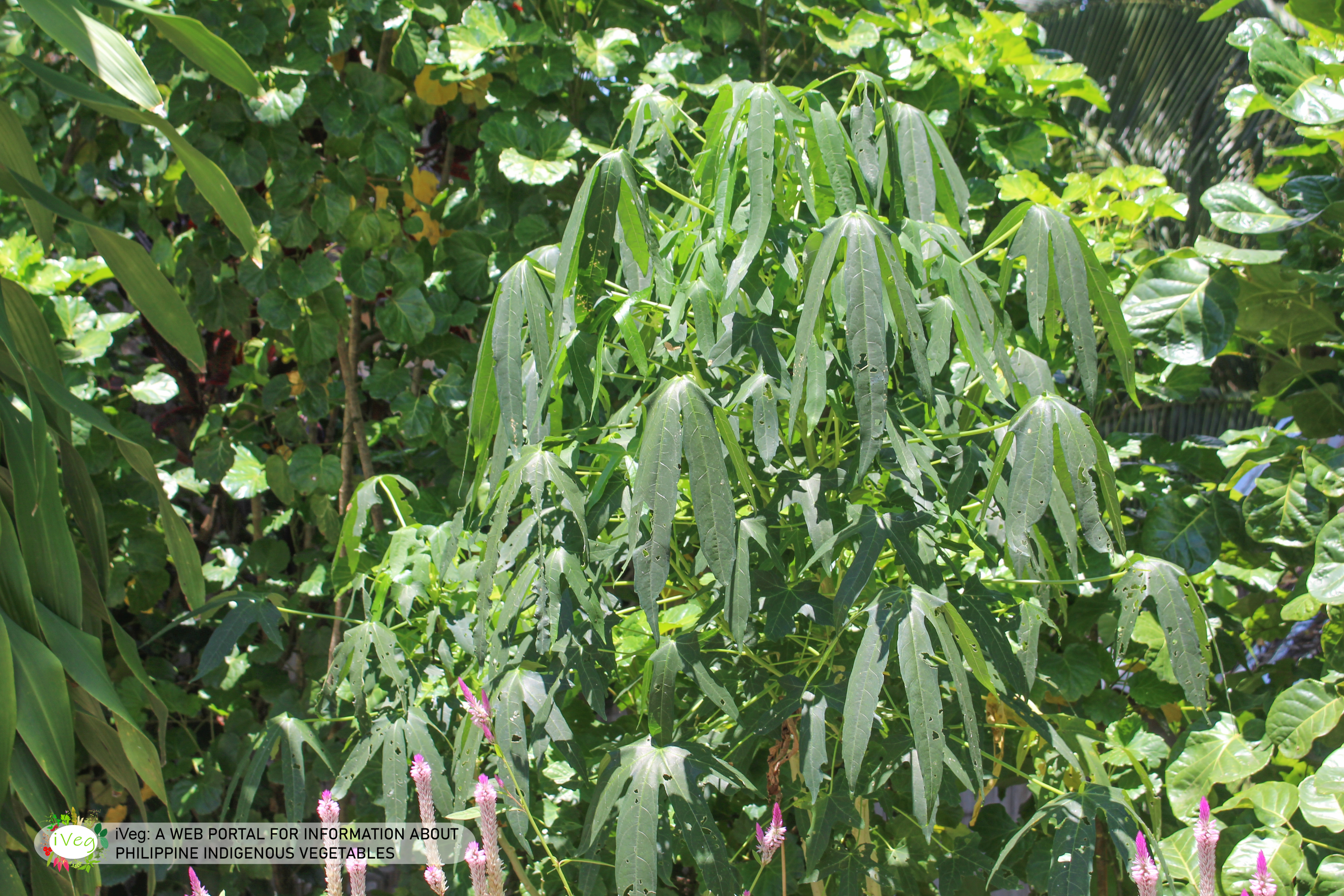
Whole Plant








Provinces where specific IVs were documented
 BukidnonCamarines SurCapizDavao del SurLeyteQuezonSiquijorSouth CotabatoSurigao del NorteZamboanga del Norte
BukidnonCamarines SurCapizDavao del SurLeyteQuezonSiquijorSouth CotabatoSurigao del NorteZamboanga del NorteMap Source: PhilGIS
Properties
Food Composition per 100g Edible Portion | Unit | Fresh leaves | Blanch Leaves | ||||
|---|---|---|---|---|---|---|---|
| Water
Energy, calculated Energy, calculated Protein Total Fat Carbohydrate, total Carbohydrate, available Ash, total |
g
kcal kJ g g g g g |
86 54 226 4 1.2 6.8 - 2 |
92.4 30 126 1.3 0.4 5.3 - 0.6 |
courtesy of Food and Nutrition Research Institute Department of Science and Technology
